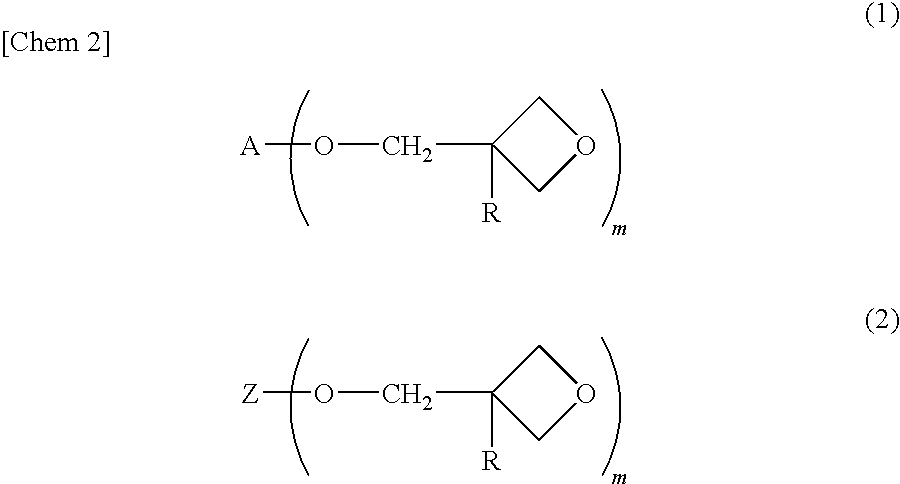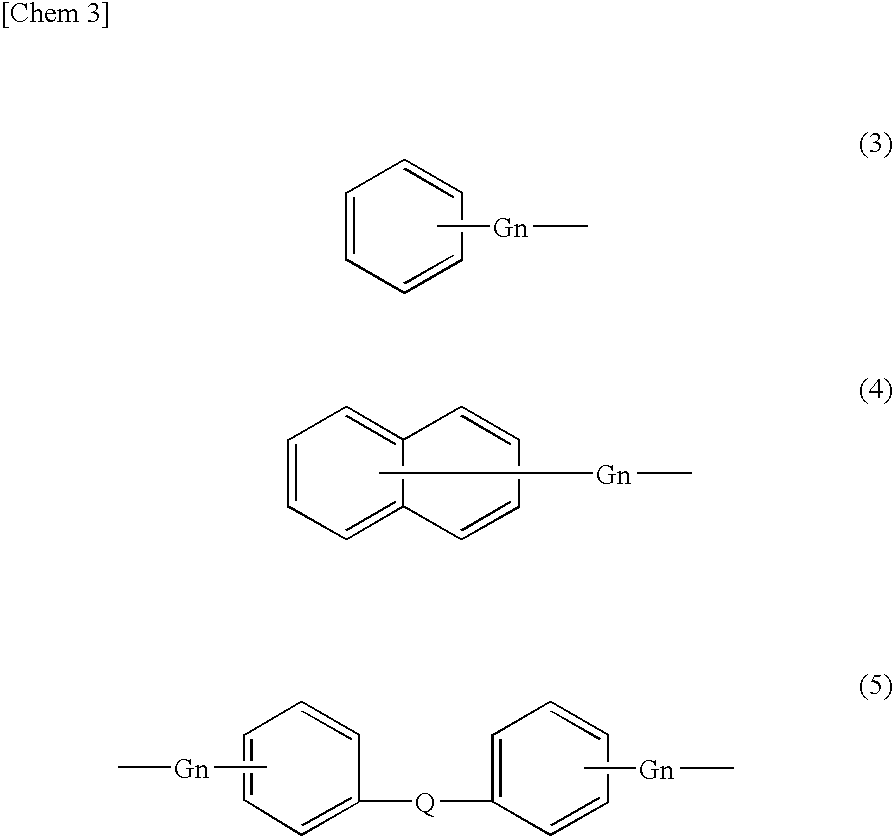Process for producing alicyclic oxetane compound
a technology of alicyclic oxetane and compound, which is applied in the direction of physical/chemical process catalysts, metal/metal-oxide/metal-hydroxide catalysts, organic chemistry, etc., can solve the problems of high production cost, insufficient satisfactory, complicated production steps, etc., and achieve excellent heat resistance, toughness and adhesiveness, excellent light transmission, and good curing
- Summary
- Abstract
- Description
- Claims
- Application Information
AI Technical Summary
Benefits of technology
Problems solved by technology
Method used
Image
Examples
example 1
[0043]40 g of 4,4′-bis[(3-ethyloxetan-3-yl)methoxymethyl]biphenyl (obtained by subjecting ETERNACOLL OXBP manufactured by UBE INDUSTRIES, LTD.; purity 94.6%) to a pretreatment for removing a reaction inhibiting substance), 60 g of ethyl acetate as a solvent, and 0.2 g of a 5% Ru-carbon carried catalyst (manufactured by N.E. CHEMCAT CORPORATION, powder) were loaded into an electromagnetic stirring type autoclave having an internal volume of 200 ml, and the autoclave was hermetically sealed. After that, the inside of the autoclave was replaced with a nitrogen gas three times and with a hydrogen gas three times, and then the pressure in the autoclave was increased to 6 MPa with the hydrogen gas. A temperature was increased while stirring was performed. A hydrogenation reaction was performed while an inner temperature of 140° C. and an inner pressure of 6 MPa were kept. The stirring was stopped 1 hour after no hydrogen absorption had been observed. The time elapsed between the initiatio...
example 2
[0048]A reaction was performed in the same manner as in Example 1 except that a 5% Ru-alumina carried catalyst (manufactured by N.E. CHEMCAT CORPORATION; powder) was used. The time elapsed between the initiation of the temperature increase and the stopping of the reaction was about 6 hours. The reaction liquid was analyzed by means of gas chromatography. As a result, the resultant compound had a purity of 88.1%, the percentage consisting of 44.6% of a trans-trans isomer, 36.5% of a trans-cis isomer, and 7.0% of a cis-cis isomer.
example 3
[0049]12.8 g (0.11 mol) of 3-ethyl-3-hydroxymethyloxetane having a purity of 98.5%, 4.5 g (0.11 mol) of an NaOH powder having a purity of 97%, and 25 ml of toluene were loaded into a 300-ml three-necked round bottom flask equipped with a temperature gauge, a condenser, a stirring device, and a dropping funnel, and the whole was stirred at 90° C. for 30 minutes under heating. A solution prepared by dissolving 11.5 g (0.05 mol) of a bis(chloromethyl)naphthalene mixture composed of 45.5% of 1,4-bis(chloromethyl)naphthalene and 53.4% of 1,5-bis(chloromethyl)naphthalene into 175 ml of toluene was dropped from the dropping funnel to the resultant over 30 minutes. Furthermore, a reaction was continued at 90° C. for 10 hours. After the completion of the reaction, the temperature of the reaction mixture was cooled to room temperature, and the precipitate was filtered out. The filtrate and a washed liquid obtained by washing the precipitate with 20 ml of toluene twice were gathered, and the w...
PUM
| Property | Measurement | Unit |
|---|---|---|
| pressure | aaaaa | aaaaa |
| temperature | aaaaa | aaaaa |
| temperature | aaaaa | aaaaa |
Abstract
Description
Claims
Application Information
 Login to View More
Login to View More - R&D
- Intellectual Property
- Life Sciences
- Materials
- Tech Scout
- Unparalleled Data Quality
- Higher Quality Content
- 60% Fewer Hallucinations
Browse by: Latest US Patents, China's latest patents, Technical Efficacy Thesaurus, Application Domain, Technology Topic, Popular Technical Reports.
© 2025 PatSnap. All rights reserved.Legal|Privacy policy|Modern Slavery Act Transparency Statement|Sitemap|About US| Contact US: help@patsnap.com



